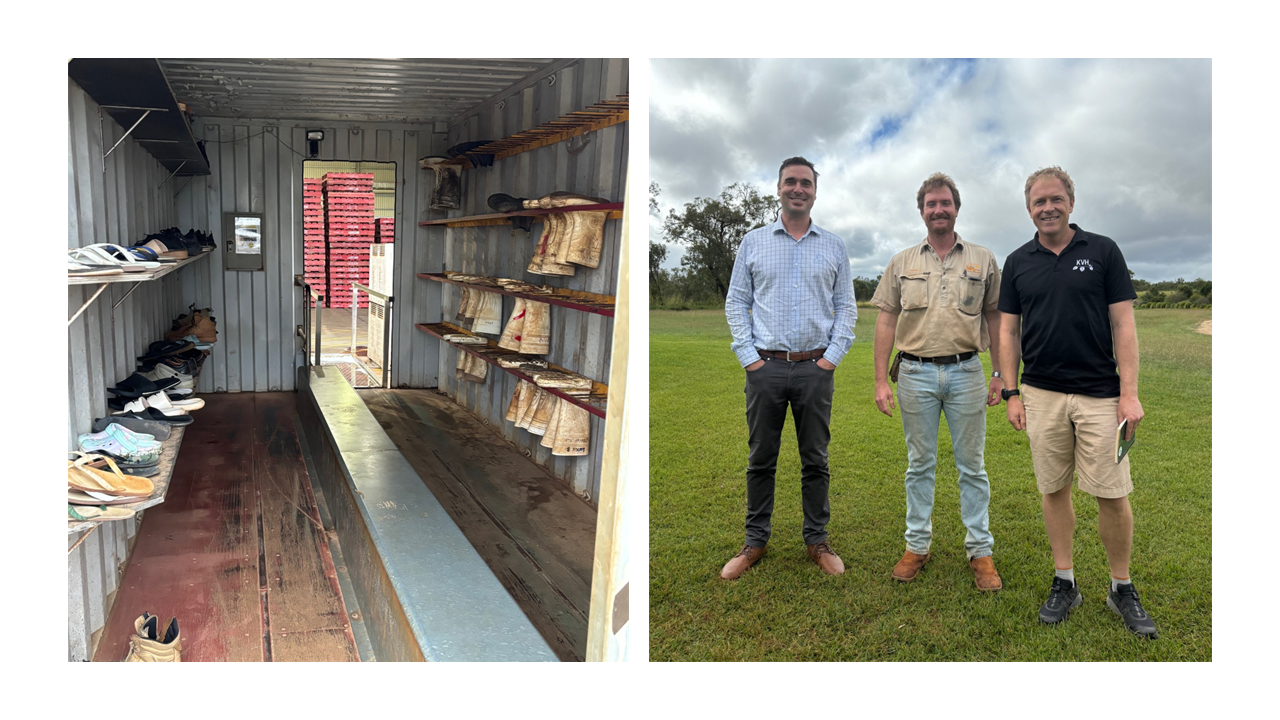Seen something unusual? MAKE A REPORT
Seen something unusual? MAKE A REPORT

Earlier this month, KVH visited Cairns to attend the Plant Biosecurity Research Initiative (PBRI) Symposium.
This two-day event is held every two years to highlight research outcomes from PBRI’s $69M investment in plant biosecurity. The event also provides KVH with an excellent opportunity to stay engaged with our Australian counterparts in research, industry, and government.
Northern Queensland is a focal point for biosecurity in the banana industry, which is under threat from a soil borne pathogen, known as Panama disease Tropical Race 4 (TR4). KVH visited some banana farms (as they are referred to) and was kindly hosted by Howe Farms to see what lessons we could incorporate into our own biosecurity preparedness for kiwifruit threats.
TR4 has been sweeping through banana production regions around the world and was first detected in Australia in 1997 where it decimated the local banana industry. In 2015, TR4 was detected in Northern Queensland where 95% of Australia’s bananas are grown.
The initial response was a scorched earth policy where the infected property was purchased by the industry and all host material (banana plants) removed and the earth left bare to prevent further transmission. While this approach may have slowed the spread, it has not eradicated the disease which is now known to be present on five properties in Northern Queensland.
While the pathogen is not considered eradicable, the coordinated approach between Federal and State Governments, alongside industry has been effective in slowing the spread compared to all other regions where this pathogen has been detected.
As a soil borne pathogen, on-orchard practices are focused at preventing the movement of soil and plant material between properties. Visiting banana farms provided KVH with an excellent learning opportunity to observe the practices used to combat a threat that is spread this way. Where applicable, KVH will look to incorporate these learnings into our readiness plans for other soil borne pathogens such as Ceratocystis fimbriata, which is considered our number one pathogen threat and has caused significant impact to kiwifruit growers in Brazil, as well as a wide range of other hosts around the world.
Image: Managing biosecurity risk includes shipping containers with mandatory footwear changes and footbaths with separate entrances and exits (left); Matt Dyck from KVH visiting a banana grower, along with Brad Siebert from New Zealand Avocado.

KVH investigates reports of unusual symptoms to identify and manage any biosecurity risks.
The KVH portal is now the Zespri Weather & Disease Portal. Access all the weather tools you're familiar with.
